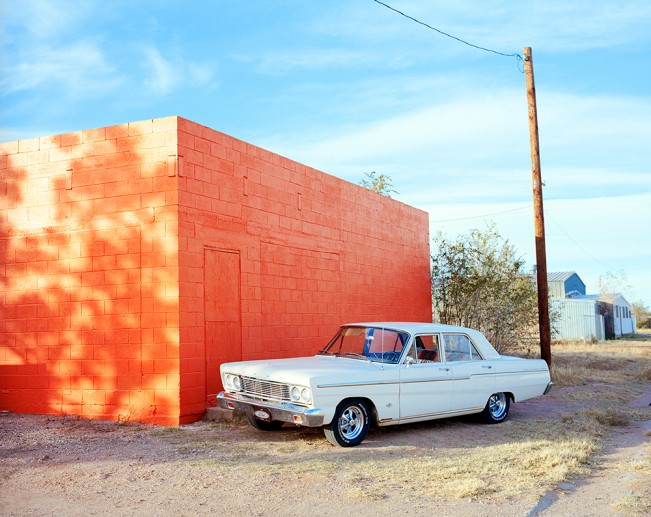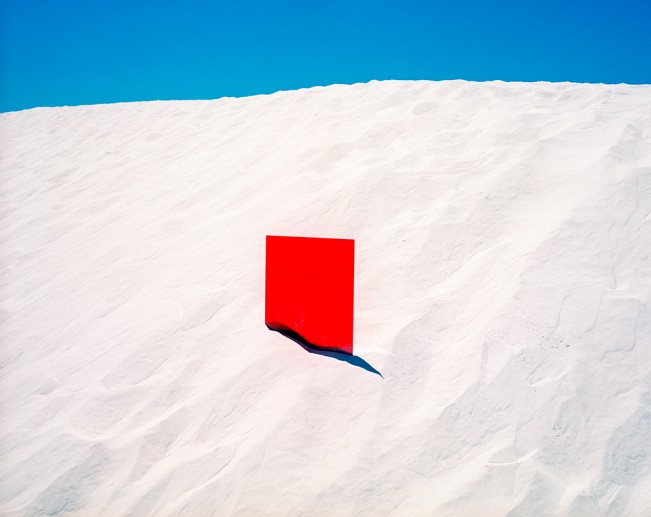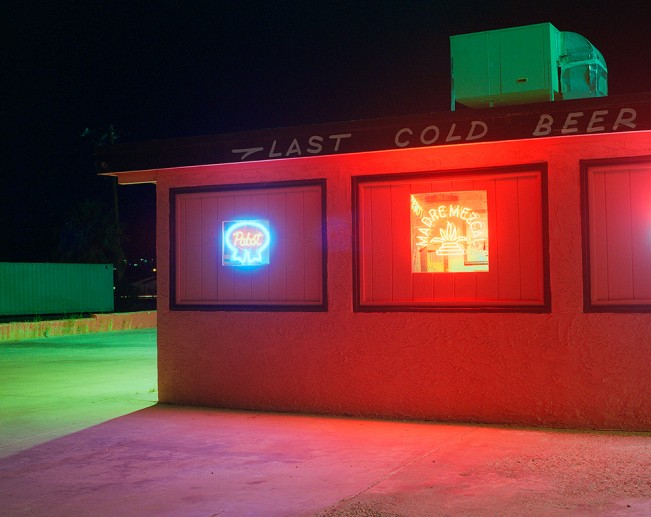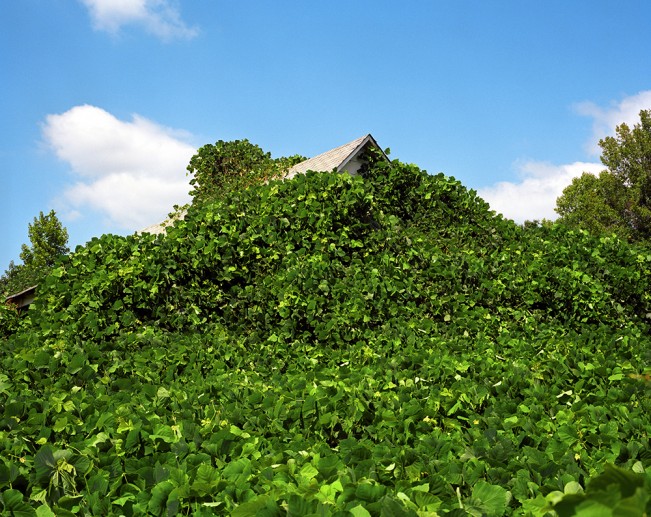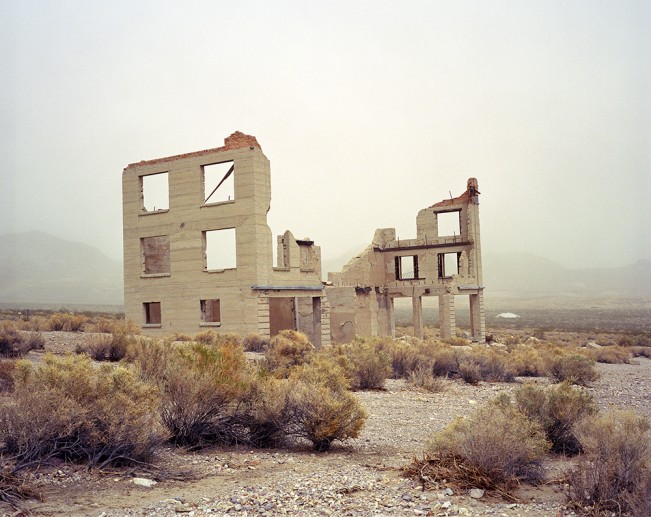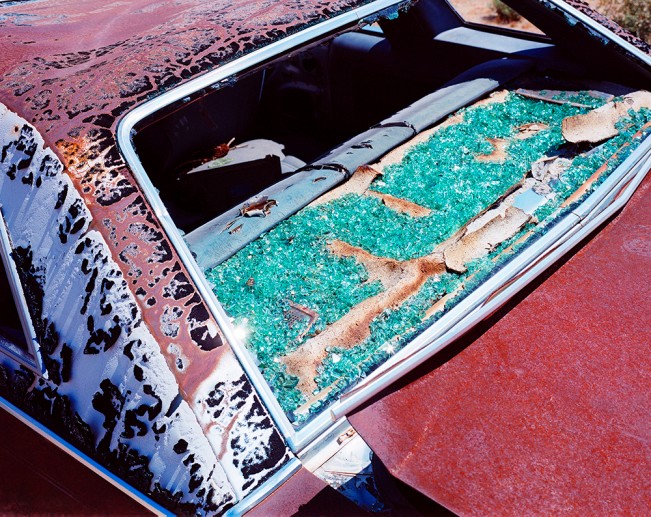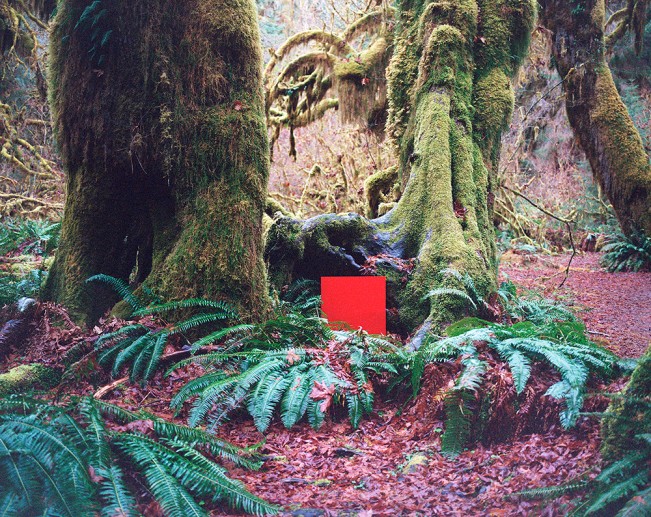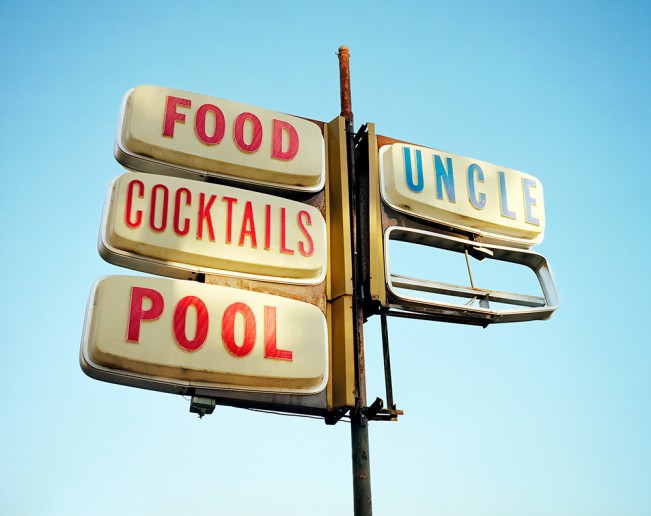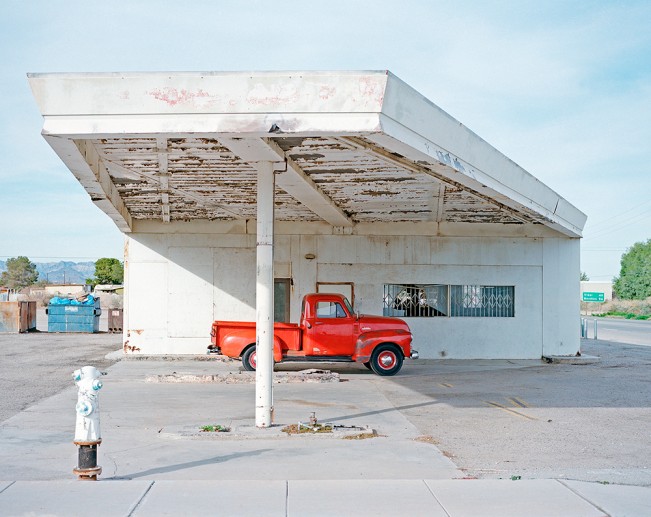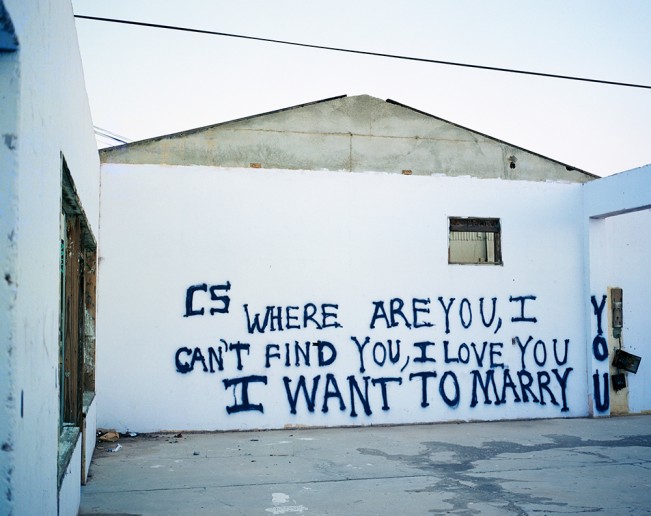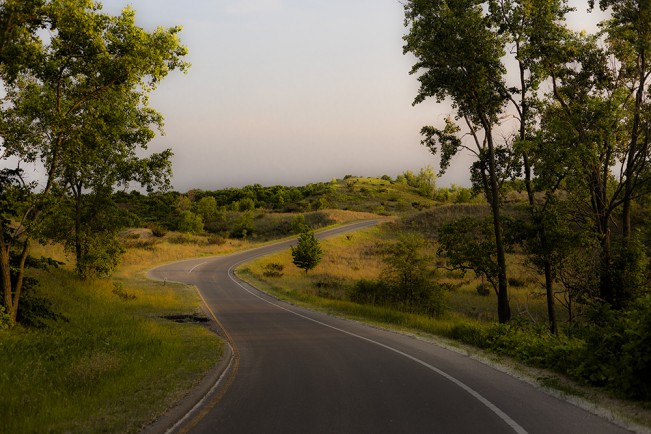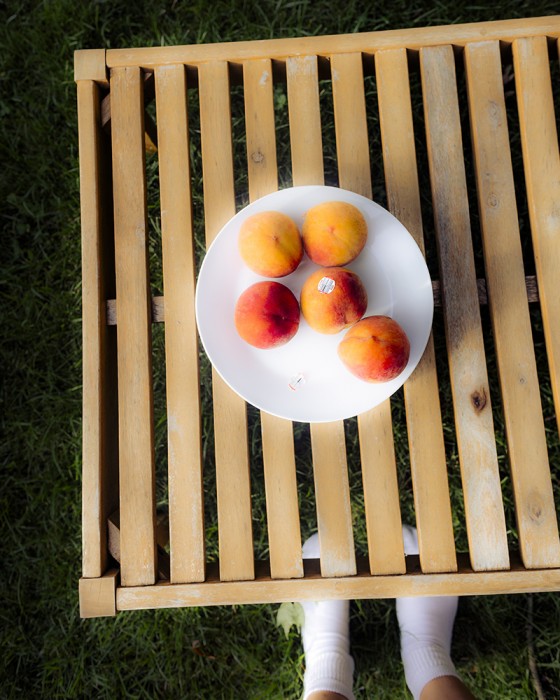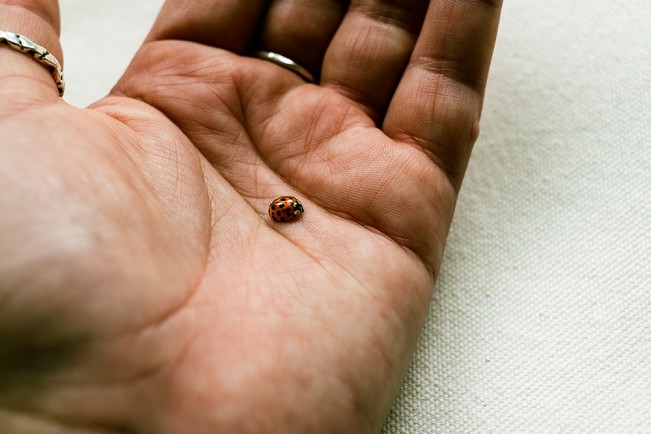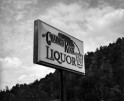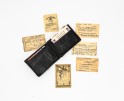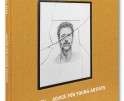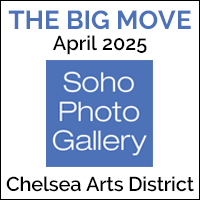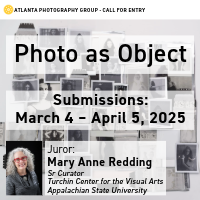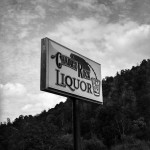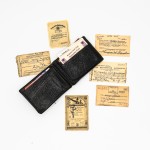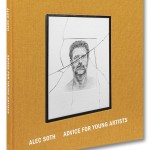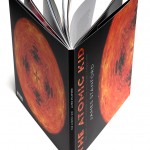Photographers on Photographers: Sierra R. Aguilar in Conversation with Rob Hann
As an individual who is driven by color, composition, and light, I have always greatly admired the work of New York photographer Rob Hann, and his ability to craft the meticulous tales of the American west. Through his work, stories emerge of not only the natural and man-made environments of this region, but also the intriguing details of the people who live there. While staying true to the area’s culture and lifestyle, Hann creates work solely authentic to himself that will certainly allow his name to go down in the history books as one of America’s greatest road trip photographers.
Being given the opportunity to ask Hann about his photographic journey was not only enlightening, but inspiring, and allowed for greater interpretations of how viewers and photographers interact with the world’s current landscape.
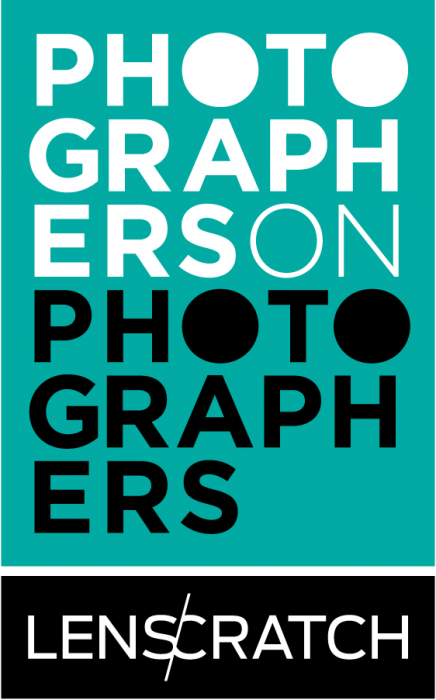 Rob Hann was born on a farm, a short distance from Stonehenge, in the south of England. He bought a camera at the age of 31 with the idea to become a photographer. In the following years Rob shot a great many portraits for magazines and record companies. In 2001 he took his first road trip in The United States shooting what he found along the way. Rob moved from London to the US in 2003 and from 2010 has concentrated exclusively on his road trip photography. He now divides his time between New York City and Joshua Tree, California. Rob has 7 photographs in the permanent collection of The National Portrait Gallery in London. His first book, Diesel Fried Chicken, was published by The Artist Edition in 2018. Rob sells his work through Clic in New York and Larsen Warner Gallery in Stockholm, Sweden. He sells smaller affordable prints through his website robhann.com.
Rob Hann was born on a farm, a short distance from Stonehenge, in the south of England. He bought a camera at the age of 31 with the idea to become a photographer. In the following years Rob shot a great many portraits for magazines and record companies. In 2001 he took his first road trip in The United States shooting what he found along the way. Rob moved from London to the US in 2003 and from 2010 has concentrated exclusively on his road trip photography. He now divides his time between New York City and Joshua Tree, California. Rob has 7 photographs in the permanent collection of The National Portrait Gallery in London. His first book, Diesel Fried Chicken, was published by The Artist Edition in 2018. Rob sells his work through Clic in New York and Larsen Warner Gallery in Stockholm, Sweden. He sells smaller affordable prints through his website robhann.com.
Follow Rob on Instagram: @rob.hann
Sierra R. Aguilar: How did you get into photography?
Rob Hann: At the age of 30 I became a model. I was living in New York City but moved to Milan to pursue that career. I wasn’t sure how long the modeling could last and, being in that world, I thought maybe I could become a photographer. I bought a camera and started shooting friends. I was thinking I might get into fashion but then saw a huge Irving Penn retrospective, which had started at MoMA, at the Victoria and Albert Museum in London. It was a fantastic show and I bought the catalog. I was very drawn to the portraiture. Penn not only took wonderful portraits but had also met all of these amazing subjects. I thought maybe that was something I could do. I spent about 8 years shooting friends and building a portfolio. I moved from Milan to Paris and then to London where I started showing my work to photo editors at magazines and got my first breaks in music and spent several years shooting for the weekly rock paper the NME as well as other magazines and record companies before starting to shoot portraits for the weekend magazines of several national newspapers in Britain.
SRA: Your website touches on prior portraiture work, how and why did you switch to “road trip” photography?
RH: I’d been shooting for magazines and record companies for several years but felt I should really be shooting personal work if I wanted to develop as a photographer. At the time I was living in London and nothing I was seeing around me was exciting me enough to start shooting a personal project. Then one wet and windy winter’s evening I was watching a show on TV called “This is Modern Art”. The presenter was driving through west Texas towards the town of Marfa under a huge cloudless sky talking about minimalist sculptor Donald Judd. I thought “I want to be there!”.
A few months later I flew to LA, rented a car and drove to Marfa and back through the desert southwest taking pictures along the way. I was excited by the photos I was taking. I’d found my subject. That was in October 2001. In 2003, I moved to NYC and kept taking road trips building a body of work. By 2010, the internet had adversely affected magazines and record companies. I was getting less work and less money. I was getting in debt and out of desperation I thought maybe I could try selling prints of my road trip photography on the street in New York to help pay the rent. I set up a table in SoHo selling small affordable prints. It went well and I was noticed by Christiane Celle, owner of Clic Gallery who started selling large limited edition prints of my work. Shortly after that Christian Larsen of Larsen Warner gallery in Stockholm, Sweden saw me on the street and bought several large prints from me. I’ve now had 2 shows with Larsen Warner and a museum show in Sweden.
Once I started selling the large prints I quit the magazine work to concentrate on selling prints. I still sell small prints from my table in SoHo on weekends as well as large prints through Clic and Larsen Warner… and I’m still taking the road trips.
SRA: Can you talk about how color influences or affects your work and overall compositions?
RH: Color is very important to my work. It can give the work an emotional charge that affects the viewer. I shoot on film but scan the negatives and print from a digital file. I tweak the colors in Photoshop and sometimes the smallest shift in color can give the photo a very different feel. It can also be compositionally important. In the opening sequence of Wim Wenders’ classic movie “Paris, Texas” Harry Dean Stanton is walking through the desert wearing a battered red baseball cap. The red really stands out in the sun bleached landscape. I believe that scene had an effect on my work. The effect was initially unconscious but now I’m aware of it and I’ll often use color to draw the eye to a subject in my photos.
SRA: How does your work affect you personally?
RH: I make my living from my work. Having that creative outlet also satisfies a need in me. I think I’d feel very frustrated without that outlet. It also gives me an identity as a photographer and an artist that I can feel good about.
SRA: Can you speak on your desire to shoot the American landscape, and how coming from England affected that? Also, would you ever consider photographing another geographical landscape?
RH: I think coming from England gave me a romantic view of America and the American road fueled by movies, music and books. I wouldn’t entirely rule out shooting somewhere else although I think that the United States is probably big enough and contains enough subject matter to keep me busy for the rest of my life.
SRA: How do you measure success – do you consider yourself successful, or is there something you need to achieve first in order to feel that way?
RH: I think I measure success by the enjoyment I’ve got from doing the work.
I do feel successful as I’ve spent many years doing what I enjoy doing. I’ve made some strong pictures and I’m also able to support myself from selling my work. I’ve had a few shows and published a book of my work which sold out. I’m sure there could be certain future achievements that would be very enjoyable but I don’t think there’s anything I need to achieve to make me feel successful.
SRA: Could you talk a bit about your experience with “Diesel Fried Chicken”- what can we expect from you next?
RH: When I took that first road trip back in 2001 I felt the photos I was taking could be the basis of a book. It took me 17 years to bring that book into being. It’s actually good that it took me that long. If it had been published years earlier the book would have been a lot less strong. It also gave me time to come up with a great title! The book was published by some very good folks in Copenhagen called The Artist Edition. It was printed by Narayana Press in Denmark. I went there for the final adjustments before it went to print and it was a wonderful experience. I was very pleased with the quality of the book and would highly recommend Narayana Press to anyone. We did 1000 copies and the book sold out. I’m working on putting together another book which I hope to get out within the next year. Once I’ve done the new book, I might think about doing a smaller reprint of Diesel Fried Chicken.
SRA: Who or what is your biggest inspiration?
RH: My inspirations have been many. I’ve drawn from movies, music, writers, painters, land artists etc. If I had to single out one thing it would have to be the 1984 movie Paris, Texas.
SRA: If you could share a meal with any artist, living or dead, who would it be and why?
RH: This is a difficult one. There are several artists who I greatly admire and who’s work has been an inspiration to me. I’m not sure how enjoyable it would be to share a meal with many of them. I’ve settled on Georgia O’Keeffe. I think it would be wonderful to share a meal with her at her Ghost Ranch in New Mexico. Her work was great and I think she was probably a very strong and intriguing woman. The landscape at Ghost Ranch would be spectacular and the New Mexico cuisine would be good.
SRA: Lastly, do you have any advice for emerging photographers?
RH: I’d say follow what you love. That way you’ll do the strongest work. Try to be patient. It may take you much longer than you might want to really find your groove and to produce your strongest work. Be persistent and you will get there in time. And have fun!
______________________________________________________
Sierra R. Aguilar (b. 2001) is a multidisciplinary artist with a lens-based priority. Living and working in Michigan, Aguilar received her BFA in Photography from the Savannah College of Art and Design in spring of 2023. She has had work exhibited in juried exhibitions across the United States.
Aguilar is in the process of completing an MA in Modern and Contemporary Art History at Azusa Pacific University to further her relationship with the current art world in order to create a more inclusive and approachable field.
Follow Sierra on Instagram: @seastatic
Posts on Lenscratch may not be reproduced without the permission of the Lenscratch staff and the photographer.
Recommended
-
Elijah Howe: Chained RockApril 6th, 2025
-
Overshoot #1, Marine LanierMarch 30th, 2025
-
BEYOND THE PHOTOGRAPH: Researching Long-Term Projects with Sandy Sugawara and Catiana García-KilroyMarch 27th, 2025
-
Valery Rizzo: WonderlandMarch 22nd, 2025
-
Alec Soth: Advice for Young ArtistsMarch 20th, 2025

